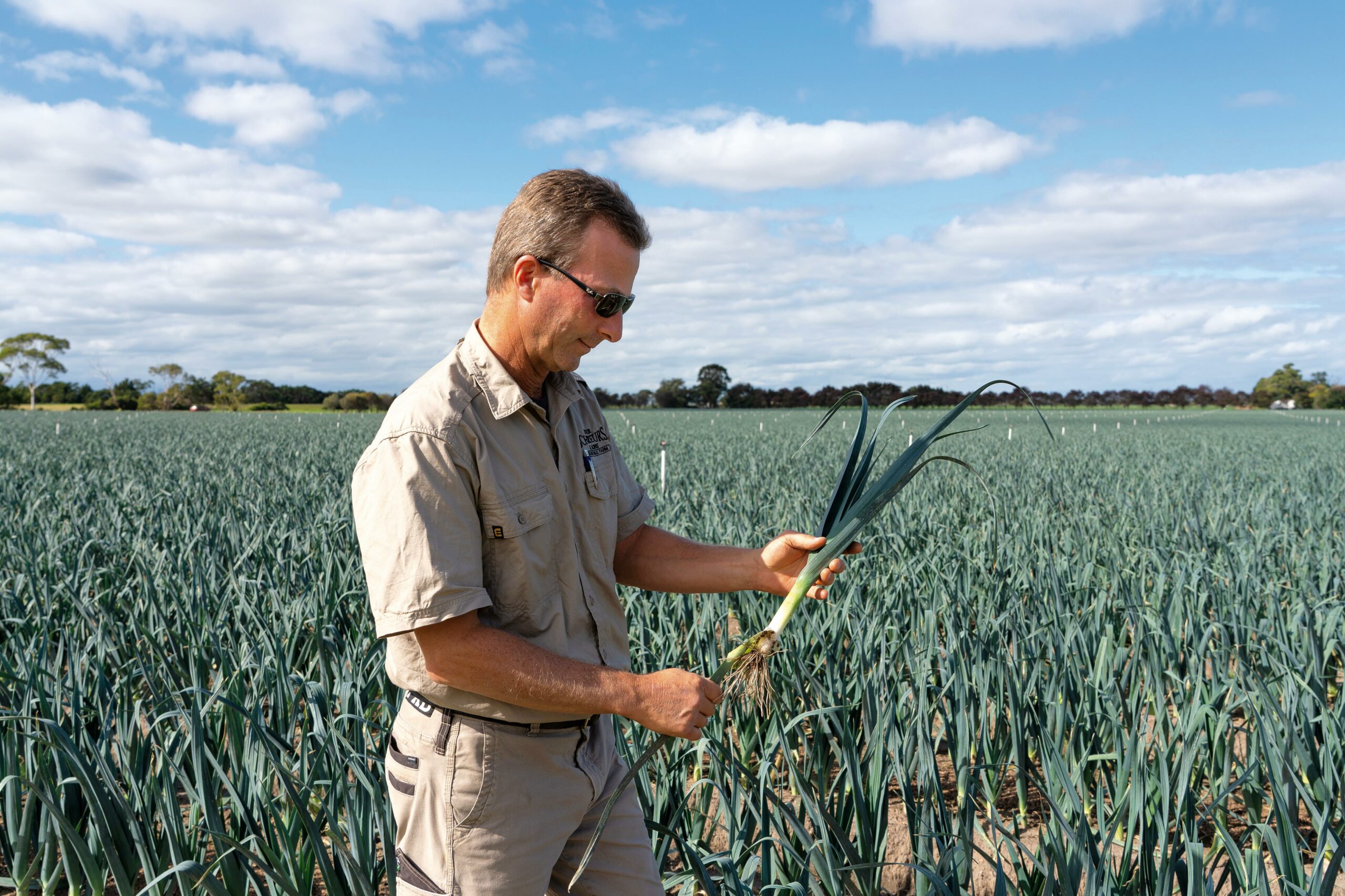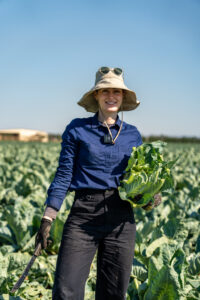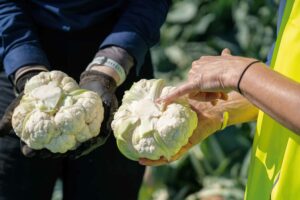
Tasmania’s broccoli and cauliflower is grown to high market standards
23 May 2024
Mixed results inform cover crop success
23 May 2024Producing broccoli and cauliflower seeds for the Australian market is reliant on tried and tested varieties and determining what growers will need for the future.
The volume of broccoli and cauliflower production in Australia was more than 76,300 tonnes and 84,890 tonnes respectively in 2022-23.
With that level of production, the number of seeds required is significant. Not only to meet volume demands, but also to cater for year-round production across most states of Australia.
As with most vegetables, broccoli and cauliflower are not restricted to a few varieties, but hundreds to suit climate, growing season, and customer demand.
To meet those needs, the development of broccoli and cauliflower varieties aims to satisfy what the customer and retail environment prefers, in combination with the needs of the grower.
“Globally there would be thousands of varieties of brassicas, but here in Australia there is likely to be more than 100 just in broccoli and cauliflower,” said Bayer regional business manager, Eliza Seymour.
“Ultimately, the broccoli head that a customer purchases from their local grocery store in the Northern Territory needs to look the same as the one bought at a store in Tasmania. That means the development of varieties needs to provide consistent results for store specifications, but also handle different growing conditions across the country.”
Developing a variety from concept through to commercialisation takes anywhere from seven to 10 years. During genetic development and field trials, consideration such as head size, colour, vigour, disease resistance and ease of harvest are all part of the final decision as to which will make it to market.
“Many growers are using varieties that are more than 10 years old, that are tried and tested, but many are happy to look at newer genetics that may offer added benefits on top of what they currently grow.
“For example, with cauliflower, the head can go yellow with sun exposure, so growers will use the leaf to cover the head to protect it and have done this practice for years. Some seed companies like Bayer are introducing new genetics that enable the cauliflower head to stay white even when it is exposed to UV light. The Curdivex® cauliflower range offers this brilliant-white trait. Part of my role is to demonstrate to growers that these new bright-white-gene varieties do not require sun protection but still produce the same results. Niche varieties such as orange or purple cauliflower come and go with customer demand. Broccoli has its own colour issues with a tendency to go purple due to the presence of anthocyanin pigments. Some retailers don’t mind it, but others may reject it.”
Field trials are an important part of grower acceptance. By the time trials are conducted in Australia, seed companies are confident that the variety will perform. For broccoli and cauliflower, Bayer will conduct a number of trials at different sites around the country, across the year.
Disease pressure and hardiness to weather conditions are important variables to trial. A variety that grows well in one location early in the season, may perform better later in the season in another region. Eliza says that the toughest season to prove a brassica is spring when weather conditions are at the most variable. A variety that performs exceptionally well in spring, will have fixed some headaches for most brassica growers.
Comparing 14 varieties of cauliflower in replica plots, Eliza will look for head size, height of the stalk (more so in broccoli), vigour of the plant’s frame, whiteness of the head and tightness of the curd for cauliflower and disease resistance.
“The challenge for growers in Australia is that broccoli is sold to market agents and retailers based on head weight, whereas cauliflowers are sold by head count, with each cauli head roughly 1kg – or about six to a crate.
“Ultimately, we look for varieties that make it easy for the grower to plant, grow and harvest. If the variety needs a specific two-week window to plant, then it adds a level complexity to the planting schedule that the grower doesn’t necessarily need or benefit from.
“One of the big focuses at the moment is stem height on broccoli. With many growers finding it difficult to find and train-up harvesting crew, the need for mechanical harvesting is on the rise, which means developing varieties that sit higher above the ground while maintaining the head weight that retailers specify.”
From seed to seedling
The majority of growers will use seedlings grown from seed by vegetable nurseries. Depending on the time of year, a seedling can take up to eight weeks to grow to the size required for transplanting on farm. Once transplanted, these seedlings grow for an additional 11 – 22 weeks before reaching full maturity. If growers were to directly plant seeds in the field, this could mean more than 30 weeks where that piece of land is taken up by a Brassica crop.
Therefore, nurseries will provide hardy seedlings to the grower in regular cycles to allow the grower to transplant, harvest, prepare the soil and re-transplant.
Seeds are generally imported and fully certified to ensure good quality, high germination rates and Australian compliance. Forecasts for seed demand are completed two years in advance to ensure that seed companies are able to meet demand in the local market for certain varieties. Brassica seeds will hold their vigour for up to five years under controlled conditions but are tested every year to grade the quality and germination rates.
The seedling nursery provides an ideal environment for germination, and as the seedlings develop, they go through a hardening process to acclimatise to an open field system.
When the seedlings are received by the grower, they are transplanted directly into raised beds. Most will use a pre-emergent herbicide. Insecticides during the season are important to prevent damage to the growing head. Most growers use BTs to keep caterpillar populations to a minimum.
Fungicide programs are also essential to control fungal pathogens. In Brassica crops the main fungal issues include White Blister (Albugo candida) and downy mildew (Hyaloperonospora parasitica). Verticillium wilt and Club Root (Plasmodiophora brassicae) can also cause issues if the soil is not treated prior to crop establishment. Brassica growers in some areas of Australia can grow 12-months a year, and in that time establish and harvest three to four different crops. Over this 12-month period they will use varieties best suited to the seasonal conditions for optimum yields.
“Brassicas are very hardy plants. I am always amazed at how a broccoli crop can grow through the depths of a freezing Victorian winter, but also thrive in the humid Queensland summers. Varieties with a strong frame and good vigour will usually deal with adverse conditions much better than those without.
Ultimately Australian brassica growers are always aiming to grow a high-quality head that consumers will pick up in store and happily take home to their family for dinner. I am just really lucky to be able to help with that process on the genetics side.”
This article first appeared in Australian Grower Winter 2024 in the Feature on Brassicas
Check out our interviews and stories on YouTube, Facebook, Instagram and TikTok

